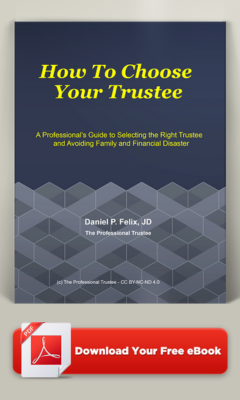The attorney delivers the long, detailed trust document. But does the trust creator understand the nuts and bolts of how it works?
More critically, does the trustee— who has to administer and manage the trust— understand it? And what about the beneficiaries?
After all, how the trustee understands the trust is how the trust will be administered.
Both the pilot of an airplane and the passengers speak a language different from the craft’s design engineer. So too, the trustee who is to steer the trust, and the beneficiary who enjoys the ride, can’t easily digest the intricate language which the trust and estate attorney must use to meet the range of legal and tax concerns.
And, just as the pilot may have questions for the plane’s owner as well as its engineer, so may the trustee have questions for the trust’s creator and his attorney. With those answers, the trustee’s interpretation can become a powerful working document.
Not being a legal document, the trustee’s interpretation can be written in plain English instead of legalese. And so, the trustee’s interpretation serves as a quick reference. It also means that the family— and applicable stakeholders and advisors— can have a simple, direct and mutual understanding of the trust. Another step on the road to success!
Photo by Oscar Sutton on Unsplash© 2015 – 2023 Daniel P. Felix, all rights reserved.


